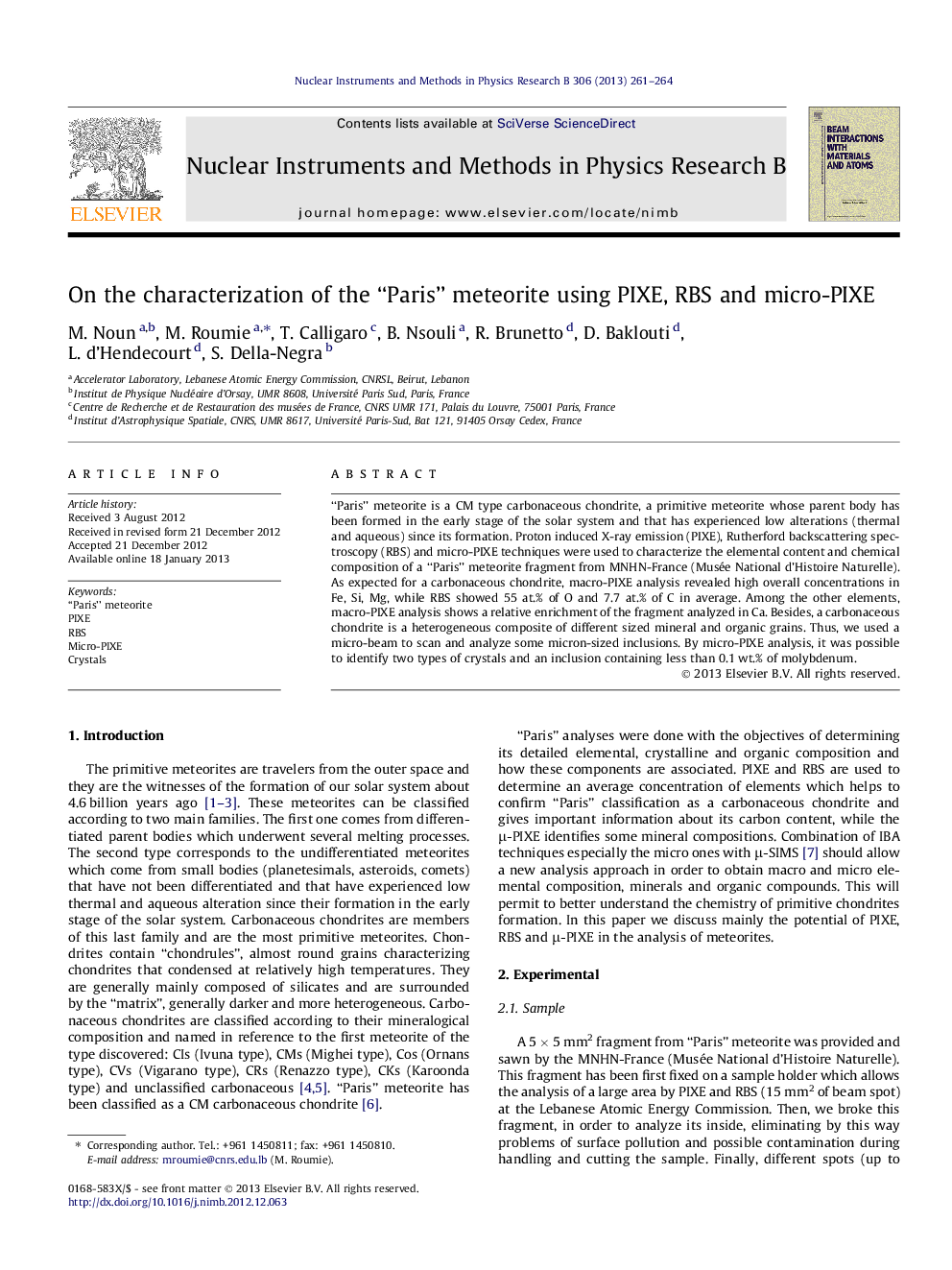| Article ID | Journal | Published Year | Pages | File Type |
|---|---|---|---|---|
| 8042722 | Nuclear Instruments and Methods in Physics Research Section B: Beam Interactions with Materials and Atoms | 2013 | 4 Pages |
Abstract
“Paris” meteorite is a CM type carbonaceous chondrite, a primitive meteorite whose parent body has been formed in the early stage of the solar system and that has experienced low alterations (thermal and aqueous) since its formation. Proton induced X-ray emission (PIXE), Rutherford backscattering spectroscopy (RBS) and micro-PIXE techniques were used to characterize the elemental content and chemical composition of a “Paris” meteorite fragment from MNHN-France (Musée National d'Histoire Naturelle). As expected for a carbonaceous chondrite, macro-PIXE analysis revealed high overall concentrations in Fe, Si, Mg, while RBS showed 55 at.% of O and 7.7 at.% of C in average. Among the other elements, macro-PIXE analysis shows a relative enrichment of the fragment analyzed in Ca. Besides, a carbonaceous chondrite is a heterogeneous composite of different sized mineral and organic grains. Thus, we used a micro-beam to scan and analyze some micron-sized inclusions. By micro-PIXE analysis, it was possible to identify two types of crystals and an inclusion containing less than 0.1Â wt.% of molybdenum.
Keywords
Related Topics
Physical Sciences and Engineering
Materials Science
Surfaces, Coatings and Films
Authors
M. Noun, M. Roumie, T. Calligaro, B. Nsouli, R. Brunetto, D. Baklouti, L. d'Hendecourt, S. Della-Negra,
